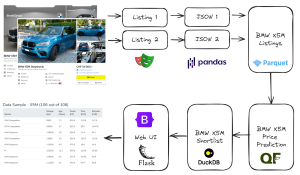Introduction
Data integration and data warehouses are two essential components of modern data management and analysis. They enable organizations to combine data from multiple sources, clean and transform it, and store it in a centralized repository for easy access and analysis. The benefits of data integration and data warehouses are numerous and can help organizations to improve decision-making, increase efficiency, and gain a competitive edge.
Benefits
One of the primary benefits of data integration is the ability to combine data from various sources. This can include data from internal systems, such as CRM and ERP systems, as well as external sources, such as social media, web analytics, and market research. By integrating this data, organizations can get a more complete picture of their operations and customers, which can help to improve decision-making and strategy.
Data integration also enables organizations to clean and transform their data, which is essential for accurate analysis and reporting. For example, data may need to be standardized, de-duplicated, or transformed to fit a specific structure or format. Data integration tools can automate these processes, saving time and effort and ensuring the quality of the data.
Another benefit of data integration is the ability to create a single version of the truth. By consolidating data from multiple sources into a centralized repository, organizations can eliminate discrepancies and ensure that everyone is working with the same set of data. This can help to improve collaboration and reduce the risk of errors.
Data warehouses are another important component of modern data management. A data warehouse is a centralized repository that is optimized for fast querying and analysis of large amounts of data. By storing data in a data warehouse, organizations can improve the performance of their analysis and reporting, as well as make it easier for users to access and analyze the data.
One of the key benefits of data warehouses is their ability to support real-time analysis. By storing data in a data warehouse, organizations can run queries and generate reports in real-time, which can help to improve decision-making and responsiveness. Data warehouses also support the use of advanced analytics tools, such as machine learning and artificial intelligence, which can help organizations to uncover insights and trends that may not be immediately apparent.
Data warehouses also enable organizations to scale their data management and analysis capabilities. As data volumes continue to grow, traditional databases may struggle to keep up with the demands of fast querying and analysis. Data warehouses are designed to handle large amounts of data and can support the needs of organizations as they grow and evolve.
Conclusion
In summary, data integration and data warehouses are essential components of modern data management and analysis. They enable organizations to combine data from multiple sources, clean and transform it, and store it in a centralized repository for easy access and analysis. The benefits of data integration and data warehouses include improved decision-making, increased efficiency, and the ability to gain a competitive edge.



